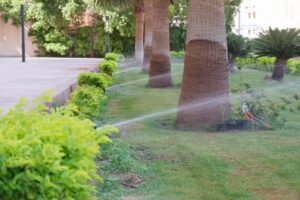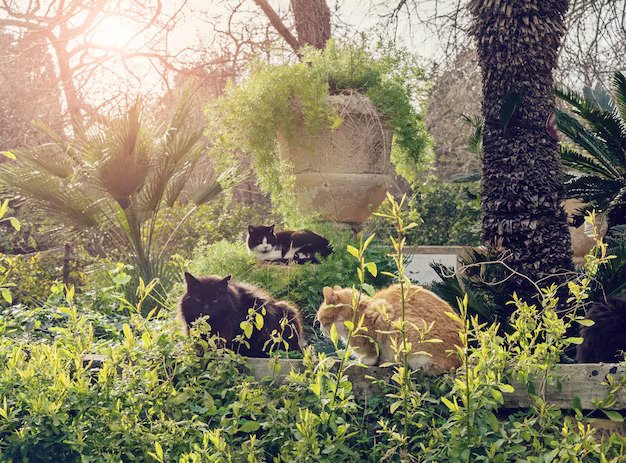Wildlife-Friendly Landscaping in Kerala: Attracting Birds and Butterflies

Kerala, renowned for its lush greenery and diverse ecosystems, offers a unique opportunity to blend the beauty of landscaping with the conservation of local wildlife.
Wildlife-friendly landscaping involves creating outdoor spaces that not only enhance the aesthetic appeal of a property but also serve as habitats for birds and butterflies.
In this blog, we will explore the principles and practices of wildlife-friendly landscaping in Kerala, focusing on how to attract and sustain vibrant populations of birds and butterflies within the landscape.
Creating Native Habitats: The Foundation of Wildlife-Friendly Landscaping
The first step in wildlife-friendly landscaping is to recreate native habitats that support local flora and fauna. Kerala’s varied topography, from the Western Ghats to the coastal plains, hosts a wide range of plant species that are adapted to specific ecological niches.
Landscapers can harness this biodiversity by incorporating native trees, shrubs, and grasses that provide food and shelter for wildlife. This not only contributes to the conservation of local species but also ensures a balanced and sustainable ecosystem within the landscaped area.
In the Western Ghats region, for example, the planting of native species like jackfruit trees, bamboo clusters, and flowering shrubs can attract a diverse array of birds. Similarly, in the coastal areas, the inclusion of salt-tolerant plants and nectar-rich flowers can create habitats conducive to butterfly populations.
The key is to research and select plant species that are indigenous to the specific microclimate of the landscaping site, ensuring they thrive and contribute to the local ecology.
Water Features: Vital for Wildlife Sustenance
The addition of water features is a crucial element in wildlife-friendly landscaping, providing not only a source of hydration but also opportunities for bathing and breeding. Birds, in particular, are drawn to water, and the presence of a well-designed birdbath or small pond can attract a variety of species.
Incorporating shallow areas in water features caters to the needs of butterflies, allowing them to drink safely without the risk of drowning.
Strategic placement of water features is essential. Placing them near native vegetation and away from high-traffic areas ensures that wildlife feels secure while utilizing these resources. The sound of flowing water can further enhance the appeal, attracting both birds and butterflies.
It’s important to maintain the cleanliness of water features to prevent the spread of diseases and to periodically refill them, especially during dry seasons, to sustain the wildlife population.
Planting for Birds: A Buffet of Food Sources
In a wildlife-friendly landscape, the selection of plants goes beyond aesthetics; it becomes a deliberate choice to provide food sources for birds. Trees and shrubs that produce fruits, seeds, and nectar are essential components.
Fruit-bearing trees like figs and berries attract frugivorous birds, while flowering plants like hibiscus and lantana offer nectar for butterflies and hummingbirds.
Landscapers often design the garden layout with a mix of plant heights and structures to create layers, mimicking the natural environment. This not only provides varied habitats for different bird species but also adds dimension to the overall aesthetic appeal.
Additionally, the use of evergreen plants ensures a year-round food supply, supporting resident and migratory bird populations.
Butterfly Gardens: A Symphony of Colors
Creating a butterfly-friendly garden is an enchanting aspect of wildlife-friendly landscaping. Butterflies are not only pollinators but also indicators of a healthy ecosystem.
Designing a garden to attract these delicate creatures involves selecting plants that cater to their life cycle. Host plants, where butterflies lay their eggs, and nectar plants, which provide sustenance for adult butterflies, are both integral.
Landscapers often include larval host plants like milkweed and parsley to encourage butterfly reproduction.
Nectar-rich flowers such as pentas, zinnias, and lantanas are strategically planted to create a continuous bloom, providing butterflies with a reliable food source. The vibrant colors of these flowers not only attract butterflies but also contribute to the visual appeal of the landscape.
Integrated Pest Management: Balancing Nature’s Harmony
One of the advantages of wildlife-friendly landscaping is the natural balance it creates in pest control. Birds and butterflies contribute to integrated pest management by preying on harmful insects that may threaten plant life.
For instance, insect-eating birds like warblers and flycatchers help control populations of pests like caterpillars and beetles.
Avoiding the use of chemical pesticides is essential in maintaining a wildlife-friendly landscape. These chemicals can harm both the targeted pests and beneficial insects, disrupting the delicate balance of the ecosystem.
Instead, landscapers can implement companion planting strategies, where certain plants deter pests naturally, or introduce predator insects that control harmful populations. This not only promotes a healthier landscape but also contributes to the overall well-being of the local wildlife.
Educational and Community Outreach: Fostering a Conservation Ethos
Wildlife-friendly landscaping in Kerala is not just about creating beautiful gardens; it’s also an opportunity for education and community engagement.
Many landscaping projects incorporate educational components, such as signage detailing the types of birds and butterflies that can be found in the area, or conducting workshops on creating wildlife-friendly spaces.
This not only enhances public awareness but also fosters a sense of responsibility towards the conservation of local biodiversity.
Community involvement is key to the success of wildlife-friendly landscaping initiatives. Residents can be encouraged to participate in bird-watching events, butterfly counts, and habitat restoration projects.
Schools and local organizations can collaborate with landscapers to integrate wildlife conservation into educational curricula, ensuring that future generations grow up with a deep appreciation for the natural world.
Conclusion
Wildlife-friendly landscaping in Kerala is a harmonious blend of art and ecology, where the beauty of outdoor spaces coexists with the conservation of local biodiversity.
By creating native habitats, incorporating water features, selecting plants that serve as food sources, and embracing integrated pest management, landscapers can transform outdoor spaces into vibrant sanctuaries for birds and butterflies.
Beyond the aesthetic appeal, these landscapes play a crucial role in fostering a sense of environmental stewardship among communities, ensuring that the green spaces of Kerala thrive as symbiotic havens for both human residents and the diverse wildlife that calls the region home.
If you’re looking for the best landscaping company in Kerala, you have a wide array of choices available.












